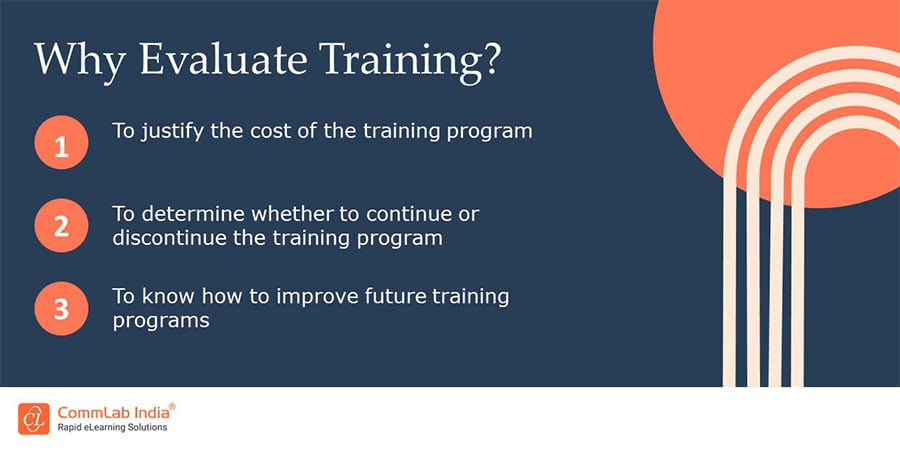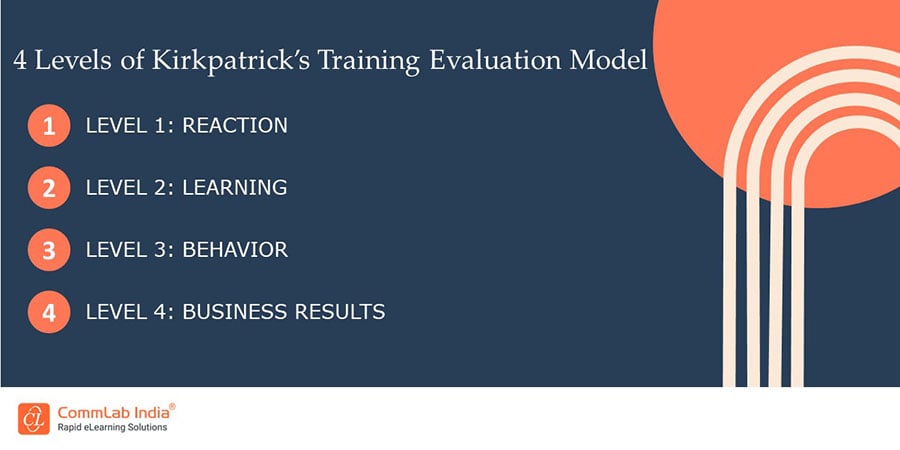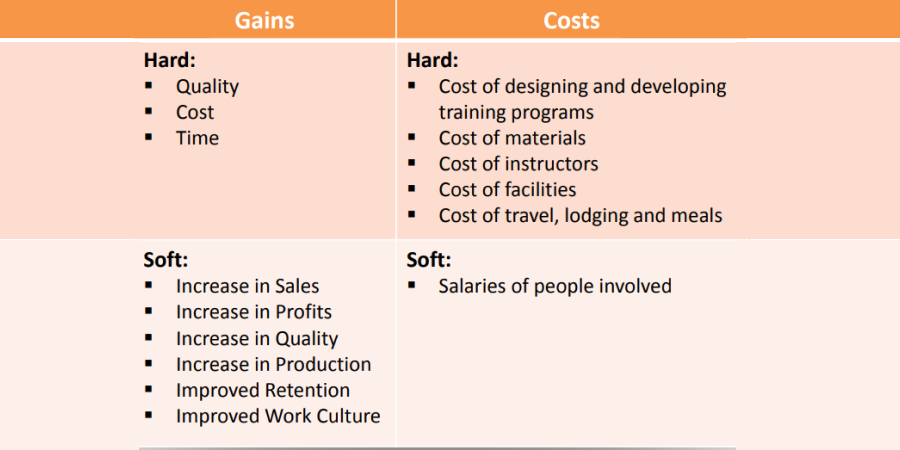4 Simple Steps to Calculate ROI for Rapid eLearning

I hope you agree to this. Learning and development play a crucial role when it comes to gaining a winning edge in this competitive world. Organizations these days are making conscious efforts to invest in employee training to set their business apart from the rest. And hence, it is important for L&D leaders to measure training effectiveness. Evaluating the training ROI (Return on Investment) not only provides a vivid picture of training’s effectiveness but also helps to get a buy-in from the management to invest in training. Rapid eLearning is gradually gaining popularity in the corporate training landscape and if you are planning to implement it in your organization, it is important for you to calculate its ROI. Read this blog to get insights.
It’s Important to Measure the Effectiveness of Your eLearning Program
Here are the 4 steps to calculate Rapid eLearning ROI:
- Collect information on benefits and costs
- Isolate the benefits
- Monetize gains
- Apply the formula to calculate ROI
In this digitally driven world, most organizations are opting for eLearning over conventional classroom training. And why not? After all, Rapid eLearning has a strong business case when compared to classroom training as it is highly cost-effective and augments the impact of learning, thereby offering high ROI.

What is Kirkpatrick’s Evaluation Model?
The Kirkpatrick model was developed by Donald Kirkpatrick, Professor Emeritus at the University of Wisconsin and former president of the American Society for Training and Development (ASTD) in 1950. The 4-level training evaluation model entails everything right from the initial learner reaction to the impact on business results. No wonder it is used by L&D professionals worldwide to measure the effectiveness of training programs.

4 Levels of Evaluation:
Level 1: Reaction
This level checks the reaction of learners. The reaction is measured by gathering feedback at the end of the training program. You can ask simple questions like:
- Did you like the training program?
- Did you like the way the training was imparted/ the way the trainer delivered the subject?
You can capture these inputs by using your Learning Management System (LMS) and create a post-training survey report. Though this evaluation is NOT very useful to justify the cost incurred on the training program, it can help you evaluate the trainers. It also enables you to understand if your learners found the course relevant and look for the scope of improvement.
Level 2: Learning
This is a practical level of evaluation and is usually done through a pre and post-test. This level determines the learning of the learners and evaluates the knowledge and skills acquired. This can be done through assignments or tests, mostly an assessment through multiple-choice questions in the case of eLearning. The performance of the learners is tracked through an LMS and can be used to evaluate the effectiveness of training. This is one of the most appropriate levels to evaluate eLearning.
Level 3: Behavior
This level aims to measure the behavioral changes in the learners post-training. You can evaluate it by analyzing how many times learners applied the knowledge and skills acquired to their day-to-day job roles, and what impact the new learnings have on their performance. However, the validity and reliability of such intangible components are questionable because it is difficult to gauge the true reason for the behavioral changes of the learners. The changes might be observed post training, but to what extent it is because of training or because of other factors like motivational levels and leadership styles is difficult to draw an accurate conclusion.
Level 4: Business Impact
This level tries to evaluate the improvement in the business results that occurred because of the learners’ participation in the training program. It is usually marked in terms of:
- Productivity (sales, quality, reduced costs)
- Employee retention
- Customer satisfaction
These are the overall end business results that all organizations aim for. But the effectiveness of training can’t be directly linked to the achievement of business goals as business results don’t happen with a single input such as training.
→ Download eBook — Rapid eLearning Design for Quick Rollout
What is Rapid eLearning ROI?
eLearning ROI is used to evaluate the monetary benefits of eLearning. This financial calculation helps you to measure the cost of developing and rolling out rapid eLearning against the benefits delivered. Organizations use this as a performance measure to calculate the efficiency of training investments. The equation is simple. To consider your eLearning project to be successful, the benefits accrued must outweigh your investment.
4 Steps to Calculate Rapid eLearning ROI
ROI on Rapid eLearning is the difference between the gain from the investment and the cost of the investment (net gains) divided by the cost of investment.
ROI = Gain from the investment – Cost of investment X 100
Cost of Investment
ROI is a performance measure used to:
- Evaluate the efficiency of investment
- Compare the efficiency of various investment options
If an investment does not offer a positive ROI, or there are other investment options with a higher ROI, we shouldn’t consider the investment. An ROI of 60% is supposed to be satisfactory to consider the investment option.
Here are the 4 steps that’ll help you in calculating Rapid eLearning ROI:
- Collect information on the benefits gained and the costs incurred
- Isolate the benefits obtained by training from those obtained by other inputs
- Monetize gains
- Apply the formula to calculate ROI
Let’s understand the first 3 steps in detail.
STEP 1: Collect Information
The first step is to collect information on the benefits gained and the costs incurred. It can be done via predesigned forms such as questionnaires or assignment sheets.
The relevant data collected from trainees and experts provide insights on:
Gains to the bottom line
► Saved costs
► Reduced wastage
► Saved time
Gains to the top line
► Increased sales and profits
► Productivity gains
Gains and Costs
When it comes to calculating the gains and costs, in classroom training, you need to consider the cost of designing and developing the training, material cost, trainer fees, logistics, travel, accommodation, meals, and so on. One often ignored cost is the opportunity cost that’s associated with employees being away from work and attending classroom training sessions. All these costs incurred have corresponding gains.
eLearning surely will reduce both the hard and the soft costs.
STEP 2: Isolate the Benefits
Apportioning the benefits of the training program to business results is a challenging task. And it is important to segregate the benefits reaped by training from those obtained by other inputs. You need to fix a percentage on the contribution of training. To execute this, you need two groups of employees.
- The Test or the Experimental Group (This group goes through the training)
- The Control Group (This group does NOT go through the training)
All other factors are maintained constant, and the results achieved from the test group can be directly attributed to training.
However, in a dynamic business scenario, it is not always feasible to have a control group for every training program, unless it is of high importance and entails substantial investment.
So, the alternative is to measure the impact of training through questionnaires based on the estimates given by:
- Participants
- Supervisors
- Managers
- Industry Experts
The questionnaire should be designed to elicit responses around what they think is the percentage of contribution of training to the results achieved.
Here’s how to get the best of your training ROI using LMS.
STEP 3: Monetize Gains
Monetizing gains is crucial to evaluate the effectiveness of the training program. Once you isolate the benefits in step 2, assign a monetary value to each gain.
Monetary value is:
- Cost savings from reworks or scraps
- Improved productivity in terms of participants’ time gain
For instance, in a bank customer care department, before training the executives could take 8 calls per hour and after training, 10 calls.
So, what’s the cost per call?
You gain 2/8, i.e., 25% on the calls. If each call costs the organization $10, you save $20 per executive.
Final Thoughts
Rapid eLearning is slowly gaining prominence in the corporate L&D sphere as it offers the desired scale and speed. Use the above steps to calculate the ROI on rapid eLearning and have easy buy-in from your management to reap the benefits of this popular training program. And here’s the way ahead — read this eBook for insights on how rapid eLearning can make a difference to eLearning development and also get to know about the best practices for instructional designers. Grab your copy now!






